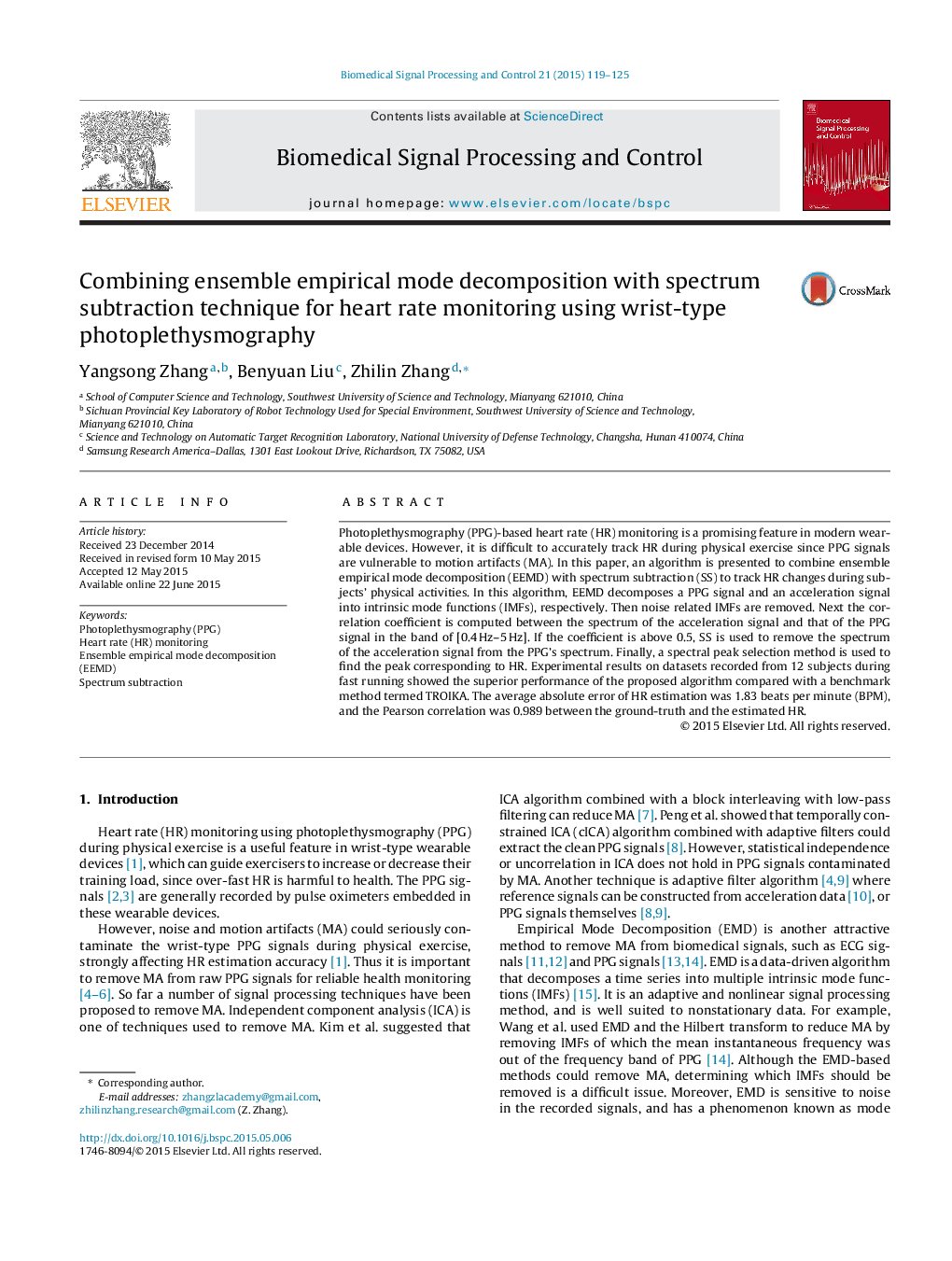| Article ID | Journal | Published Year | Pages | File Type |
|---|---|---|---|---|
| 6951338 | Biomedical Signal Processing and Control | 2015 | 7 Pages |
Abstract
Photoplethysmography (PPG)-based heart rate (HR) monitoring is a promising feature in modern wearable devices. However, it is difficult to accurately track HR during physical exercise since PPG signals are vulnerable to motion artifacts (MA). In this paper, an algorithm is presented to combine ensemble empirical mode decomposition (EEMD) with spectrum subtraction (SS) to track HR changes during subjects' physical activities. In this algorithm, EEMD decomposes a PPG signal and an acceleration signal into intrinsic mode functions (IMFs), respectively. Then noise related IMFs are removed. Next the correlation coefficient is computed between the spectrum of the acceleration signal and that of the PPG signal in the band of [0.4Â Hz-5Â Hz]. If the coefficient is above 0.5, SS is used to remove the spectrum of the acceleration signal from the PPG's spectrum. Finally, a spectral peak selection method is used to find the peak corresponding to HR. Experimental results on datasets recorded from 12 subjects during fast running showed the superior performance of the proposed algorithm compared with a benchmark method termed TROIKA. The average absolute error of HR estimation was 1.83 beats per minute (BPM), and the Pearson correlation was 0.989 between the ground-truth and the estimated HR.
Related Topics
Physical Sciences and Engineering
Computer Science
Signal Processing
Authors
Yangsong Zhang, Benyuan Liu, Zhilin Zhang,
